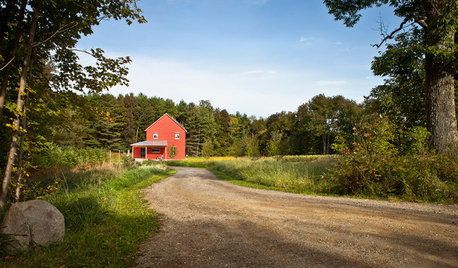Active vs. Passive Soil Fertility
Mackel-in-DFW
9 years ago
Related Stories

GARDENING GUIDESGet on a Composting Kick (Hello, Free Fertilizer!)
Quit shelling out for pricey substitutes that aren’t even as good. Here’s how to give your soil the best while lightening your trash load
Full Story
GARDENING GUIDES5 Prairie Wildflowers That Can Heal Your Soil
Get free, organic soil fertilizer with nitrogen-pumping plants that draw pollinators too
Full Story
FARM YOUR YARDHow to Get Good Soil for Your Edible Garden
The nutrients in your soil feed the plants that feed you. Here are tips on getting it right — just in time for planting season
Full Story
GARDENING GUIDESHow to Stop Worrying and Start Loving Clay Soil
Clay has many more benefits than you might imagine
Full Story
GARDENING GUIDESGet the Dirt on Your Garden’s Soil
Understand how your soil supports your plants so you can ensure your garden’s success
Full Story
GARDENING GUIDES10 Solutions for Soggy Soil
If a too-wet garden is raining on your parade, try these water-loving plants and other ideas for handling all of that H2O
Full Story
GARDENING GUIDESGarden Myths to Debunk as You Dig This Fall and Rest Over Winter
Termites hate wood mulch, don’t amend soil for trees, avoid gravel in planters — and more nuggets of garden wisdom
Full Story
THE ART OF ARCHITECTUREFinding the Perfect Home for a New House
Sun, soil, water, topography and more offer important cues to siting your house on the land
Full Story
GARDENING GUIDESHow to Switch to an Organic Landscape Plan
Ditch the chemicals for a naturally beautiful lawn and garden, using living fertilizers and other nontoxic treatments
Full Story
GARDENING GUIDESHow to Keep Your Citrus Trees Well Fed and Healthy
Ripe for some citrus fertilizer know-how? This mini guide will help your lemon, orange and grapefruit trees flourish
Full StoryMore Discussions







pnbrown
johns.coastal.patio
Related Professionals
Signal Hill Landscape Architects & Landscape Designers · Alexandria Landscape Contractors · Addison Landscape Contractors · Holtsville Landscape Contractors · Pine Hills Landscape Contractors · Raleigh Landscape Contractors · Ramsey Landscape Contractors · Yukon Landscape Contractors · Austin Decks, Patios & Outdoor Enclosures · Kernersville Decks, Patios & Outdoor Enclosures · Owings Mills Decks, Patios & Outdoor Enclosures · Somerville Decks, Patios & Outdoor Enclosures · Southampton Decks, Patios & Outdoor Enclosures · West Palm Beach Decks, Patios & Outdoor Enclosures · Wildomar Decks, Patios & Outdoor Enclosuresglib
johns.coastal.patio
Mackel-in-DFWOriginal Author
elisa_z5
Kimmsr
pnbrown
glib
Mackel-in-DFWOriginal Author
glib
david52 Zone 6
johns.coastal.patio
glib
johns.coastal.patio
pnbrown
glib
Mackel-in-DFWOriginal Author
glib
Mackel-in-DFWOriginal Author
pnbrown
johns.coastal.patio
Mackel-in-DFWOriginal Author
pnbrown
johns.coastal.patio
pnbrown
johns.coastal.patio